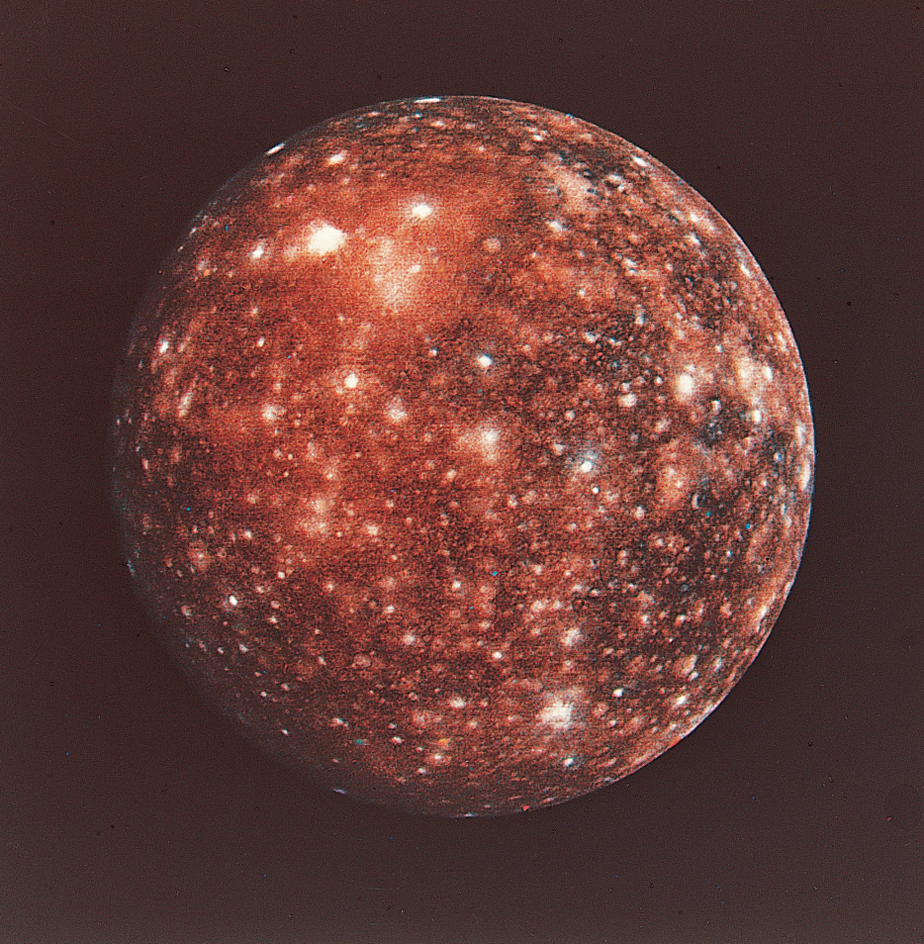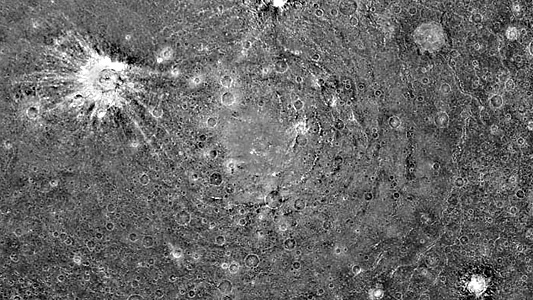Callisto, << kuh LIHS toh, >> is a large moon of Jupiter. It is almost as large as the planet Mercury. It is one of the most heavily cratered bodies in the solar system. Its surface is covered with craters of all sizes caused by the impact of asteroids and comets.

More than 4 billion years of bombardment have darkened Callisto’s icy surface. The biggest impacts cracked the surface to form huge bull’s-eye patterns. The surface is blanketed by dark dirt that accumulated when icy crater rims and cliffs crumbled away.

Callisto is about half rock and half ice by weight. However, it may not have a distinct rocky core. As Callisto formed and evolved, it may not have become hot enough to melt the ice so that gravity could completely separate the rock into a core. The satellite has a carbon dioxide atmosphere that is only slightly denser than the near-vacuum of outer space.
Magnetic measurements taken by spacecraft indicate that Callisto acts as if it is covered by a shell that is conducting (carrying) electric current. Scientists suspect that the “shell” is actually an ocean of salty liquid water beneath the surface. Scientists are trying to determine how such an ocean could have formed and why it would not have frozen by now.
Callisto has a diameter of 2,996 miles (4,821 kilometers). It orbits Jupiter every 16.7 days at a distance of 1,170,000 miles (1,883,000 kilometers). The Italian astronomer Galileo discovered Callisto in 1610.
See also Jupiter (Galilean satellites); Satellite (Major satellites).
